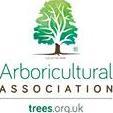
Barrell Tree Consultancy has been working to promote the importance of existing trees in planning for more than two decades, but what practical wisdom has emerged from more than 7,000 completed projects? In this article, Jeremy Barrell explores the subtleties of effective tree protection on construction sites, and shares a new approach showing promising signs of success. It seems that a cocktail of back-to-basics and images packaged as concise Site Guidance Notes is improving how site operatives deal with trees, and delivering a much needed environmental windfall in the planning process.
The political aspiration of ‘net environmental gain’ compared to the current reality
The government’s flagship environment policy draft, A Green Future: Our 25 Year Plan to Improve the Environment, introduces the concept of ‘natural capital accounting’ into mainstream political thinking. Hard on its heels, the draft National Planning Policy Framework (NPPF) repackages the concept as ‘net environmental gain’, but it has a similar meaning. Either way, the political momentum is with the wisdom of being careful with existing environmental assets, which is particularly relevant to urban trees because they are already in place delivering multiple benefits right where they are needed most, where people live and work.
The aspiration is admirable, but the current reality on the ground is somewhat different. Our experience from working on construction sites for two decades is that there is a chasm between the tree retention promised at the design/planning stage and what is delivered on completion. Our perception is that good trees are being unnecessarily lost during development, and that is significantly contributing to a national trend of decreasing urban canopy cover. A worrying observation, even more confounding because the technical expertise to protect trees is well-developed, there is a planning imperative to do so, and it is relatively inexpensive to achieve.
Barriers to successful tree retention
In our quest to find a solution, we identified several practical and procedural barriers to successful tree retention:
- Communication breakdown: There is often poor communication between the planning and implementation stages of the development process, so it is common for the site operatives to be unaware of tree protection agreed with planners.
- British Standard (BS) guidance: The BS guidance is copyrighted, which prevents its detail being easily reproduced to explain specific operations.
- Weak planning conditions: Poorly informed/inexperienced planners often write weak planning conditions, and so agreed tree protection cannot be enforced as intended.
- Formal reports: Although detailed reports are an essential part of describing a development proposal in the design and planning stage, once consent is issued, those reports are rarely found or used on site, i.e. site operatives meant to implement tree protection do not have easy access to information on how to do it.
- Report aversion: People on site are not engaged by complex or lengthy reports, which results in key personnel not understanding how to properly protect retained trees.
- Ineffective enforcement: Local planning authorities (LPAs) often struggle to enforce detailed tree protection requirements that are not clearly explained in the planning application documents.
On the bright side, we find that plans are a universally understood medium on site and their use is routine, so important information on plans has a better chance of being used than if it is buried in a report.
Evolution of the Site Guidance Note (SGN) concept
To make a real difference to tree survival, we wanted to develop a solution to bridge the procedural gap between planning and implementation, i.e. assist the operatives doing the building to understand the tree protection proposals and how to execute them on site.
Our early efforts focused around including the detail of site operations within our impact appraisal reports submitted with planning applications, but this resulted in lengthy documents making it difficult to pinpoint specific information. Although this approach contained all the technical information, it drew regular criticism from tree officers as being too complex, generic, and not site specific. Our subsequent evolution illustrated the technical content with photographs of real examples from our thousands of projects, which was more effective at explaining, but still resulted in long reports, so was only partially successful. The report size issue was solved by the advent of improved internet storage of and access to information. We took our lead from the government approach to storing generic guidance for planning online: if that was acceptable for government administration, then why not for tree protection as well?
Through this lengthy process of trial and error, the design priorities began to emerge to shape the concept of the SGN. Reports could be kept short and site specific by extracting and storing generic information online. That information needed to explain the principles of each individual tree protection operation in a way that made it easy for site operatives to understand and access. There needed to be a summary of the technical support references to add the necessary depth of detail and credibility. Photographs of tree protection operations were preferred to text explanations. Finally, the overview and detail of how to do each tree protection operation should be quickly and easily accessible through the tree protection plan.
That was the design process, and this is what we came up with: twelve individual SGNs (Figure 1) covering the commonest tree protection issues, ranging from supervision, to fencing, to excavating in root protection areas. Each SGN starts with a concise bullet point summary of key information that site operatives should know, followed by images showing how it can be done, and concludes with a summary (not verbatim quotes) of the technical guidance. Each SGN can be downloaded free (www.barrelltreecare.co.uk/resources/technical-guidance/) and accessed directly on site using mobile devices to scan the QR Codes (Figure 2) on the tree protection plan.

Using sGns
Anyone can access and use each SGN free, but the source must be acknowledged, and their format/content must not be altered. Their multiple benefits include:
- LPAs can link online to SGNs to publicise planning expectations.
- Consultants can reference SGNs in their planning reports, either linking to the online source, or downloading them and inserting them directly into the report.
- Developers can use SGNs to specify tree protection for pricing and implementation.
- LPA planning officers can directly reference SGNs in planning conditions as a source of credible detail.
- LPA tree officers can use SGNs on site to explain tree protection expectations to developers.
- Site operatives can download SGNs to mobile devices on site as a quick reference when working near trees.
- When it all goes wrong, LPA enforcement officers can reference SGNs as clear examples of what was expected.
In short, SGNs provide a common standard for reasonable tree protection expectations during development.
Due to our sophisticated planning system, the UK leads the world in specifying and implementing tree protection on development sites. No other country has produced anything as comprehensive as these SGNs and we are currently discussing their international roll-out, with interest from New Zealand, Australia, Canada, and Sweden.
And the final question: where is the payback to us for the significant intellectual capital invested in designing and delivering the SGNs? In practical terms our business is based on a reputation built over decades for innovation and efficiency, and our SGNs promote those characteristics. Although we are giving away great ideas, we are gaining credibility as architects of invention, and we place a high value on that. Professionally, we see business is changing fast, with consumer decisions increasingly driven by high ethical standards; it’s a risk, but we chose sharing over secrecy, and only time will tell if that was a wise choice!
Article by Jeremy Barrell, taken from issue 181 of the ARB Magazine
-
 1
1
Report Article













Recommended Comments
There are no comments to display.
Create an account or sign in to comment
You need to be a member in order to leave a comment
Create an account
Sign up for a new account in our community. It's easy!
Register a new accountSign in
Already have an account? Sign in here.
Sign In Now